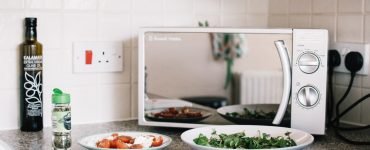Disclosure: This post contains affiliate links. If you purchase a product or service through those links, we will earn a commission (at no additional cost to you).
The Novice’s Guide to Vegan Eating
What is a vegan diet anyway? It seems so extreme!
A Vegan diet excludes meat, poultry, fish, eggs and dairy products and any foods that contain these products.
In order to squeeze the most benefit out of this proverbial diet lemon you should choose an array of healthy fruits, vegetables, legumes, nuts, and whole grains.
Be warned, though, there are still plenty of vegan “junk” foods out there so just because you switch to eating vegan doesn’t mean you’ll automatically become healthier.
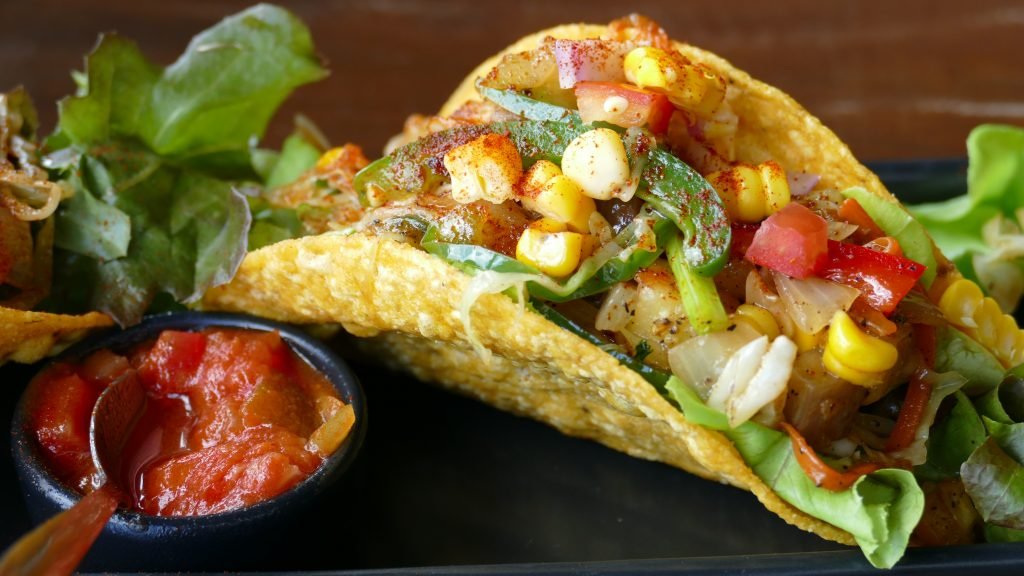
But really, what is a vegan diet?
To put it differently, you cut out any food product that came from something with a face. For example, milk came from a cow which has a face. Milk is not allowed on a vegan diet. Apples or oats did not come with something that has a face so they’re both perfectly acceptable choices. When in doubt ask, “Did this have a face at one time?” and you’ll have the answer!
Now you may be asking yourself, “How can I ever live without meat, cheese, or butter?!” Not to worry my friend, NOW is the time to become vegan. There are SO many great alternatives to animal products. Honestly, most of these alternatives taste better than their animal based counterpart. I dare you to pick the vegan cheese fondue at the Melting Pot. It is SO good you’ll never go back to real cheese. And don’t forget the Beyond Meat burger? It’s so good you won’t find it in the health food or vegan section, it is in the meat section.
Don’t I need meat for protein?
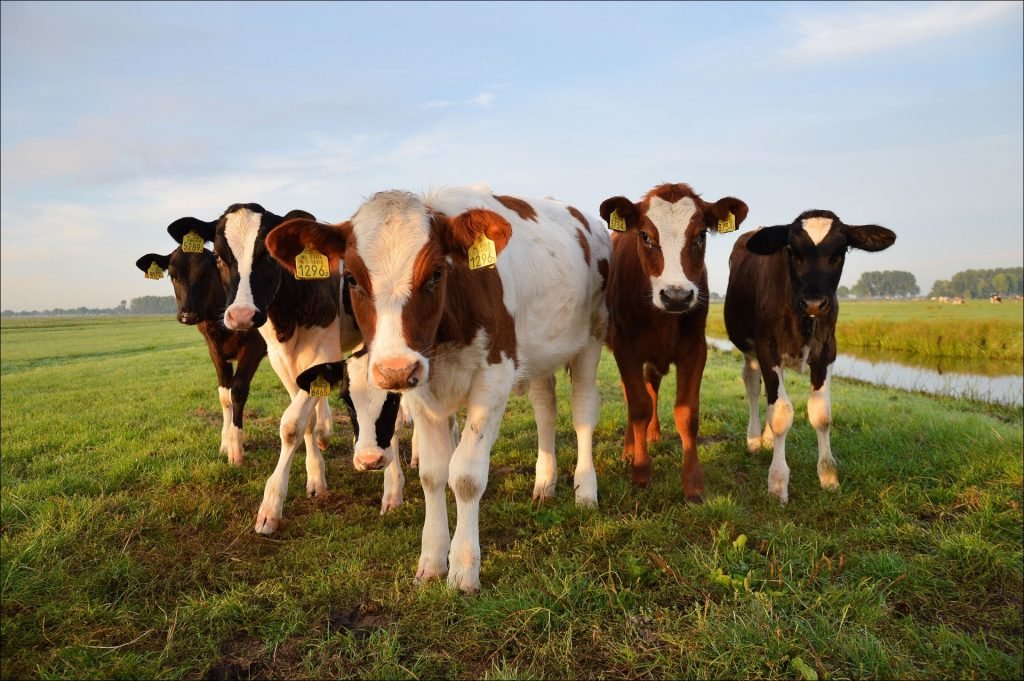
Americans consume WAY too much protein. And more is not better… there is no advantage to a high protein diet. In fact, too much protein can cause osteoporosis and even kidney disease. Only 20% of our calories need to come from protein (50 grams total per day, which is the same as one 6 oz. steak or 1 cup oats with nut butter, flaxseeds, and soy milk)
Where do I get plant based protein on a vegan diet?
It’s actually easy to eat the recommended amount of protein on a vegan diet. Nearly all vegetables, beans, grains, nuts, and seeds contain protein. If you can’t think of any options besides beans and nuts, we have a list of amazing plant based protein options already put together for you.
Don’t I need milk for strong bones?
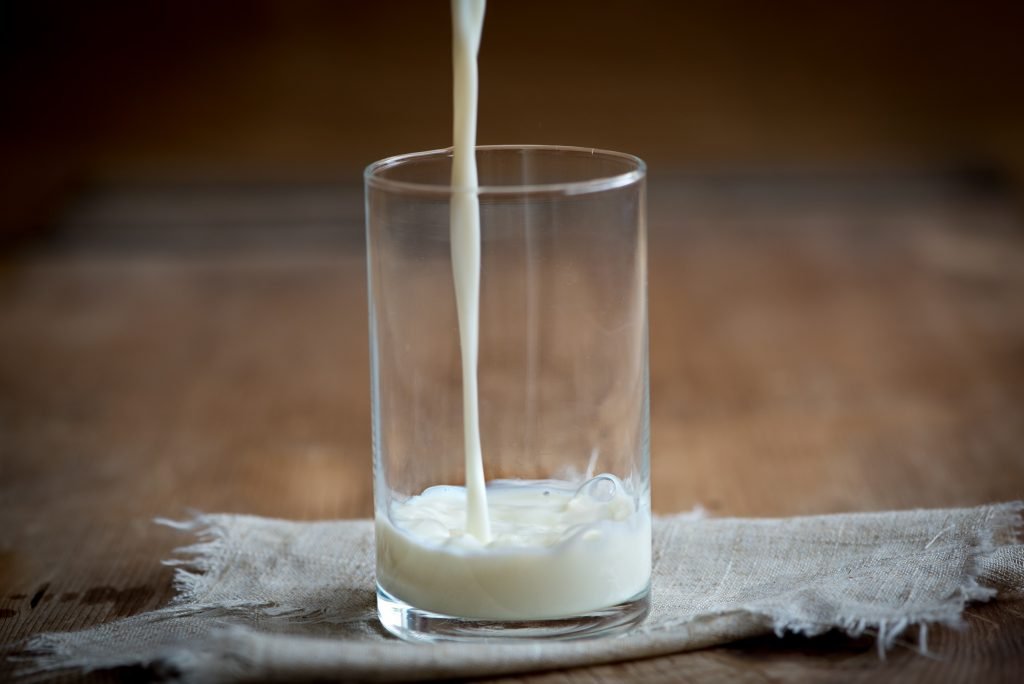
Interestingly enough, the countries with the highest dairy consumption also have the highest incidences of osteoporosis. There are several journal articles which have proven diary consumption DOES NOT build strong bones.
Don’t trust everything you read… only scientifically proven studies (and this blog, of course!). Most (if not all) large health organizations take ludicrous amounts of money from meat and dairy companies.
Even the US Department of Agriculture that releases new dietary guidelines for Americans is made of committee members who have received money from McDonald’s, the National Dairy Association, the American Meat Institute, the National Dairy Board, the National Livestock and Meat Board, the American Egg Board, Coca-Cola, and Anheuser, just to name a few. Conflict of interest anyone?
As for bone health most vegan milks such as almond, oat, soy, and flax are fortified with additional calcium and vitamin D. Also, most vegetables are full of these vitamins and minerals and are more easily absorbed than dairy products.
Information from www.whatthehealth.com
Benefits of a Vegan Diet
The question still stands, though… why should YOU switch to a vegan diet?
By eating products that are nutrient rich like whole grains, fruits, vegetables, beans, peas, nuts and seeds your body will thank you!
First of all, vegan diets are much higher in fiber, which has great gut benefits. Added fiber results in fewer pathobionts and more protective species. This leads to reduced levels of inflammation which provide protective health benefits.
Other bonuses include higher amounts of antioxidants, potassium, magnesium, folate and vitamins A, C and E. These benefit the heart, skin, eyes, and immune system.
A vegan diet dramatically lower your risk of heart disease. Compared to meat eaters vegans have a staggering 75% lower risk of developing high blood pressure. What’s even crazier is that vegans also have a 45% lower risk of dying from heart disease.
And how about the scariest word of all, cancer. Did you know The World Health Organization has classified processed meats such as bacon and sausage as directly involved in causing cancer in humans?
Eating processed meat can increase cancer risk by 18%. They also classify processed meat as a group 1 carcinogen which is the same group as cigarettes, asbestos, and plutonium. Red meat is classified as a group 2 carcinogen – the same group as insecticides.
Does type 2 diabetes run in your family? You can change your future by becoming vegan. Veganism reduces the risk for type 2 diabetes by 78%. Studies even report that vegan diets lower blood sugar levels in diabetics more than the diets from the American Diabetes Association, American Heart Association, and National Cholesterol Education Program. What is even more exciting is that several study show a vegan diet can provide complete relief from distal polyneuropathy which is the condition that causes sharp pains in diabetics.
What about everyday problems like sleepiness?

Animal products are tough for your body to digest. A vegan diet is very easy for the body to break down. This will naturally give you more vigor. Eating nutrient rich foods such as healthy fats, vitamins and minerals will also give you extra energy. AND, you won’t have any sugar highs (and subsequent crashes or lows) which will eliminate that afternoon drowsiness and replace it with stable energy throughout the day.
With all this extra energy will I still be able to go to bed at night?
Actually, a lot of foods on the vegan diet will also help with insomnia. Foods like bananas, sweet potatoes, broccoli, cashew butter, peanut butter, avocados, kale, almonds, walnuts, spinach, and squash all contain vitamin B6, tryptophan, and magnesium, which make your body calm and help to ensure a great sleep cycle.
If you’re wondering where you’ve heard of tryptophan before, it’s in turkey. Think about getting that wonderful “Thanksgiving afternoon sleep” every night.
What about my waistline?
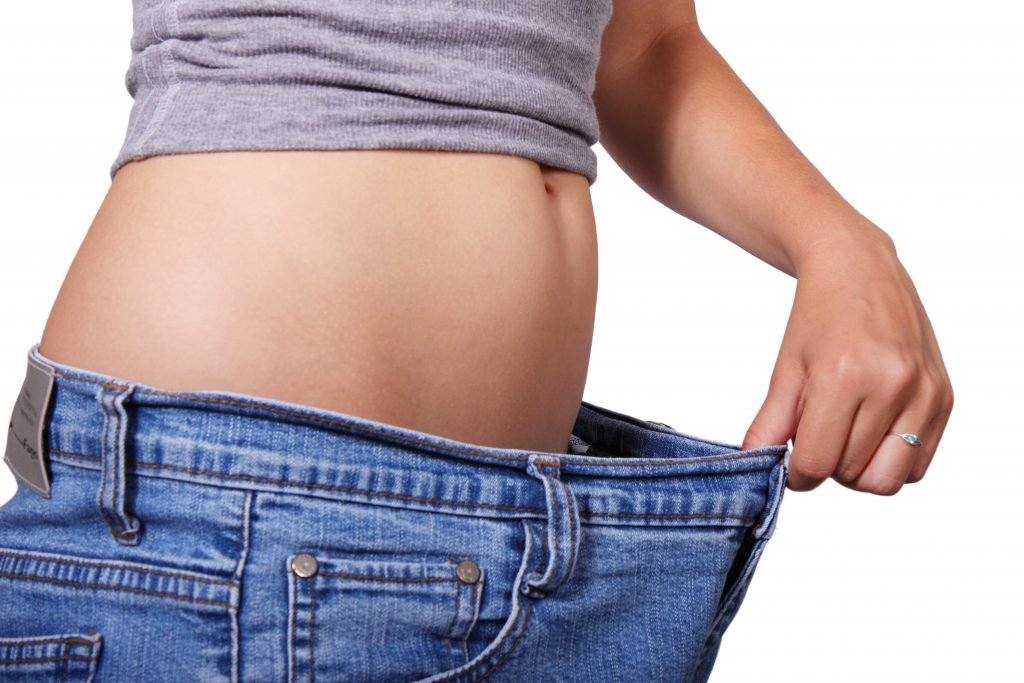
You will lose weight on a vegan diet. Since vegans eat a lot of high fiber foods you will feel more full after eating fewer calories than your omnivore pals. The best way to promote a good mindset is to be aware of what you are putting in your body which is what vegans naturally need to do. This will also be a positive change for your waist and your mind.
Miss that glowing skin of your youth?
With all of those vitamin rich foods entering your body you will see a change in your outer appearance as well. For me it was within about a week. I used to have terrible acne and tried EVERYTHING including salicylic acid peels at the dermatologist. After one week of eating vegan I was breakout-free and had a natural glow.
Benefits aren’t just for you, veganism has an impact on our world.
The production of meat and other animal products is literally killing the Earth – there are crops and water needed for feeding animals and then transportation and factories for slaughtering. Did you know emissions for livestock exceeds that of the transportation industry? Emissions from the production of beef and lamb are 250 times higher than those from legumes, and pork and poultry are 40 times higher than legumes. A large amount of methane and nitrous oxide, gases that are more than 20 times and 250 times more powerful than carbon dioxide as a greenhouse gas, are generated through livestock-raising activities.
Animals raised for food in the U.S. produce many times more excrement than the entire human population of the country. According to the U.S. Environmental Protection Agency (EPA), animals on U.S. factory farms produce about 500 million tons of manure each year. With no animal sewage processing plants, it is most often stored in waste “lagoons” or it gets sprayed over fields.
Runoff from factory farms and livestock grazing is one of the leading causes of pollution in our rivers and lakes. The EPA notes that bacteria and viruses often are carried by the runoff and contaminate groundwater.
Factory farms frequently dodge water pollution limits by spraying liquid manure into the air, creating mists that are carried away by the wind. People who live nearby are forced to inhale the toxins and pathogens from the sprayed manure.
35% of grains worldwide are fed to livestock (keep in mind, 800 million people are suffering from starvation). And, 80% of all Amazon (the forest, not your favorite online store) deforestation is due to cattle-raising. Here are just a few other statistics on how animal agriculture is affecting our natural resources:
- One acre of pasture produces an average of 165 pounds of beef; the same acre can produce 20,000 pounds of potatoes.
- It takes 2,500 gallons of water to produce one pound of meat. Between 70-90% of all U.S. grain is fed to farmed animals bred and raised for slaughter.
- The U.S. livestock population consumes enough grain and soybeans to feed more than 5 times the entire U.S. population.
- The world’s cattle alone consume a quantity of food equal to the caloric needs of 8.7 billion people – more than the entire human population on earth.
- If Americans reduced their meat consumption by 10%, it would free 12 million tons of grain annually for human consumption. That alone would be enough to feed each of the 60 million people who starve to death each year.
- 87% of all agricultural land in the U.S. is used to raise animals for food.
- About 260 million acres of U.S. forest have been cleared to create cropland to produce our meat-centered diet.
- Producing one hamburger uses enough fossil fuel to drive a small car 20 miles.
- Nearly 40% of all Central American rainforests were destroyed to create pasture for beef cattle. The rainforests are the primary source of oxygen for the entire planet.
- 55 square feet of rainforest are cut down to produce just one quarter-pound burger
On the other hand, considerably lower quantities of crops and water are required to sustain a vegan diet, making the switch to veganism one of the easiest, most enjoyable and most effective ways to reduce our impact on the environment.
***Information from www.peta.org
The inhumane way animals are treated
Cows
In the U.S., more than 29 million cows are slaughtered yearly. Did you know that cows have similar bonds to their calves as that of humans? Calves are taken from their mothers immediately after birth, the mothers are not allowed to feed the calves as that milk is reserved only for humans. And, in order to continuously provide milk, cows are repeatedly artificially impregnated and given hormones. Mother cows call and search for their babies after the calves have been taken away and sold to veal or beef farms.
Additionally, cattle that are to be slaughtered are taken via transportation without food or water. A lot of cows actually do not make the journey. If they do survive, they are shot in the head and hung up by one leg. Their throats are slit before they are skinned and gutted. Cows remain fully conscious throughout the entire process. In an interview with The Washington Post, one slaughterhouse worker said, “They die piece by piece.”
And I know you might be thinking, well they are an animal so does it really matter? According to research, cows are quite intelligent animals who can remember things for a long time. Animal behaviorists have found that they interact in socially complex ways, developing friendships over time and sometimes holding grudges against other cows who treat them badly. Cows have been shown to cry when separated from loved ones.
***Information from www.peta.org
Chickens
Chickens are unfortunately the most abused. In the United States, approximately 9 billion chickens are killed for their meat. Most of their sad lives are spent in a disgusting shed with literally thousands of other birds. Crowding is such an issue outbreaks of disease often occur. Also, they’re bred and drugged to grow so large so quickly their crippled under their own weight and eventually die because they can’t reach the water nozzles. When they are 6 or 7 weeks old, they’re crammed into cages and taken to slaughter. At the slaughterhouse, their throats are cut, and they’re immersed in scalding-hot water to remove their feathers. Because they have no federal legal protection chickens are still conscious when their throats are cut, and many are scalded to death in the feather-removal tanks after missing the throat cutter.
***Information from www.peta.org
Pigs
Pigs are considered to be the 4th smartest animal behind dolphins, monkeys, and elephants. They are also friendly and loyal making them great pets. Mother pigs spend their lives in spaces so tiny they can’t even turn around. They are impregnated again and again until their bodies give out and are then sent to slaughter. Piglets are taken away from their mothers just a few weeks after birth. Their tails are chopped off, the ends of their teeth are snipped off with pliers, and the males are castrated. No painkillers are given. When the time comes for slaughter, pigs are forced onto transport trucks that often travel for many miles through all weather extremes. Many pigs die from heat exhaustion in the summer or arrive frozen to the inside of the truck in the winter. According to industry reports, more than 1 million pigs die in transport each year by the time they arrive at the slaughterhouse. Many pigs are still conscious when they are dumped into tanks of scalding-hot water, which is intended to remove their hair and soften their skin.
***Information from www.peta.org
Doesn’t it make a difference if I choose free range or grass fed animals?
Packaging these days are completely misleading. Seeing pictures of animals running freely on little farms makes me sick. The USDA requires free range farm animals to simply “have access” to outdoor areas. It does not specify how much time they need to be outside. Most of these organic and free range farms have animals standing in their own waste and are just as crowded and filthy as regular farms. Grass fed cows only need to consume one blade of grass to be labeled as grass fed. The rest of the time they can still consume grain to make them fatter faster.
Additionally, cows on organic farms often aren’t given antibiotics—even when they’re sick or when their udders become infected, (this happens often)—because medicated animals lose their “organic” status. Additionally free range animals are still killed and mutilated just the same as regular farms.
At the end of their lives, these animals are typically shipped on trucks through all weather extremes—usually without food or water—to the same slaughterhouses used by factory farms.
What do I eat on a Vegan Diet?
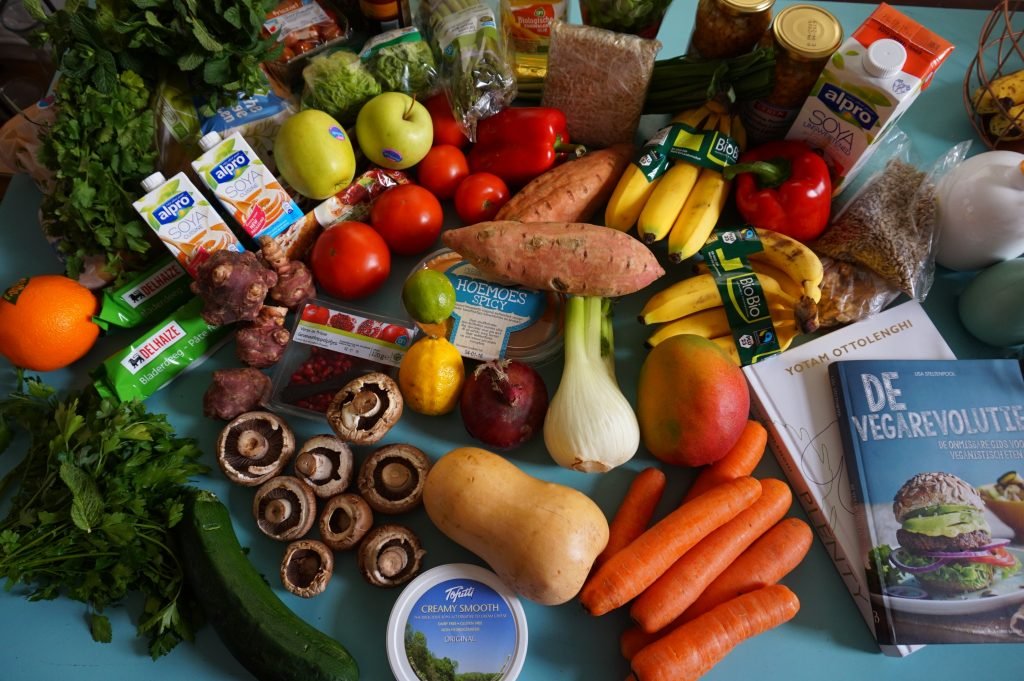
I am so thankful we live in an age where tofu isn’t the only option!! In fact, most recipes can be easily be altered to become vegan. Take a look at your favorite recipe. You can most likely swap out the meat for: beans, lentils, tofu, tempeh, seeds and nuts, seitan. Dairy products can easily be switched to plant products such as almond and oat milk or yogurt. Additionally, eggs can be replaced with flaxseeds or vegan egg replacers (made from tapioca starch and potatoes). Some excellent examples of meals which swap out meats include bean burritos, veggie burgers, vegetable pizzas, nachos with guac and beans. It is a great time to go vegan because there are excellent vegan alternatives in grocery stores including; cheeses, desserts, milks, and even “meats”.
What do I avoid on a Vegan diet?
Vegans avoid all foods of animal origin. These include:
- Meat
- Chicken
- Fish
- Shellfish
- Eggs
- Dairy
Foods to eat
As with any diet change a switch to veganism does need some attention to ensure you are meeting all of your nutritional needs. This is especially true when vegan diets are not well planned. For vegans who want to stay healthy, consuming a nutrient-rich diet with whole and fortified foods is very important. For a more detailed list and meal plan visit our 7 day vegan meal plan.
- Fruits: any type of fruit including apples, bananas, blueberries, pineapple, grapes, strawberries, citrus fruits, etc.
- Vegetables: lots of veggies including peppers, corn, avocados, lettuce, spinach, kale, peas, collards, carrots, parsnips, sweet potatoes
- Whole grains: quinoa, brown rice, millet, whole wheat, oats, barley, etc. Even popcorn is a whole grain!!
- Legumes: beans of any kind and lentils
- Nuts and Seeds
- Plant based milks, yogurts, and cheeses
The old-school plate of meat, potato, and veggie isn’t something you are going to miss – Becoming a vegan means a whole new exciting world of flavors and options that go beyond the 1970’s Food Pyramid.
Simple Plant-Based Recipes to Get You Started
We promised this would be easy! If you’re looking for inspiration, check out these free recipes:
Easy and quick dinner recipes
Comfort food
Hearty Plant-Based Wraps and Burgers
For your sweet tooth
You can easily experiment with giving some of your own favorite recipes a plant-based makeover. Replace the meat in your favorite chili with beans or lentils, cook up some yummy veggie burgers, or make sauteed veggie stir fry. For more delicious meal ideas, explore our recipe collection
How do I get started?
If you want to tackle this on your own here are some great first steps:
- Understand meal planning and plan your meals so you don’t have missteps
- Ensure you are getting all of your vitamin and mineral needs
- Drink enough water
- Get 8 hours of sleep every night
When getting started on a vegan diet you want to ensure you are getting every vitamin and mineral your body needs. With every diet there is always going to be potential gaps. The following vitamins can sometimes need to be replaced on a vegan diet. For an in depth look at the reasoning and role these vitamins play in the body please visit our 5 key supplements for vegans blog.
It’s important that you make food that you enjoy. Being a vegan isn’t about missing out on food you love. It’s about finding the food you love that is great for your body
Saving money on a vegan diet
I am the cheapest thriftiest person you will ever meet! Some people think foods that are vegan are more expensive but this isn’t true. Initially, you might find yourself needing to restock the pantry with vegan friendly items but after that, eating vegan isn’t more expensive than eating animal-based foods.
It can actually be a lot cheaper!
You’ll find that you can buy nuts, seeds, legumes in bulk and with them being naturally cheaper than meat you are already seeing the savings. Because you’re on a vegan diet, you’ll also find that you are cooking more for yourself instead of going out. This will help a ton with your budget!
Cooking on a vegan diet also doesn’t have to be time-consuming, though. Love saving time as much as I do? Here are some amazing vegan instapot recipes just for you.
Ready to start your vegan journey?

If you’re really serious about creating a new lifestyle then the vegan starter kit is for you. (Coming soon – sign up on the mailing list to know when it’s coming out).
The Vegan Diet has changed our lives. It has turned our bodies into efficient, lean, powerful structures that can do anything. We have more energy and better moods. This starter kit is exactly what you need to smoothly transition over to being a vegan with no stress and best of all we make it super easy. This is something that isn’t too good to be true. Get started today and start feeling better tomorrow.


